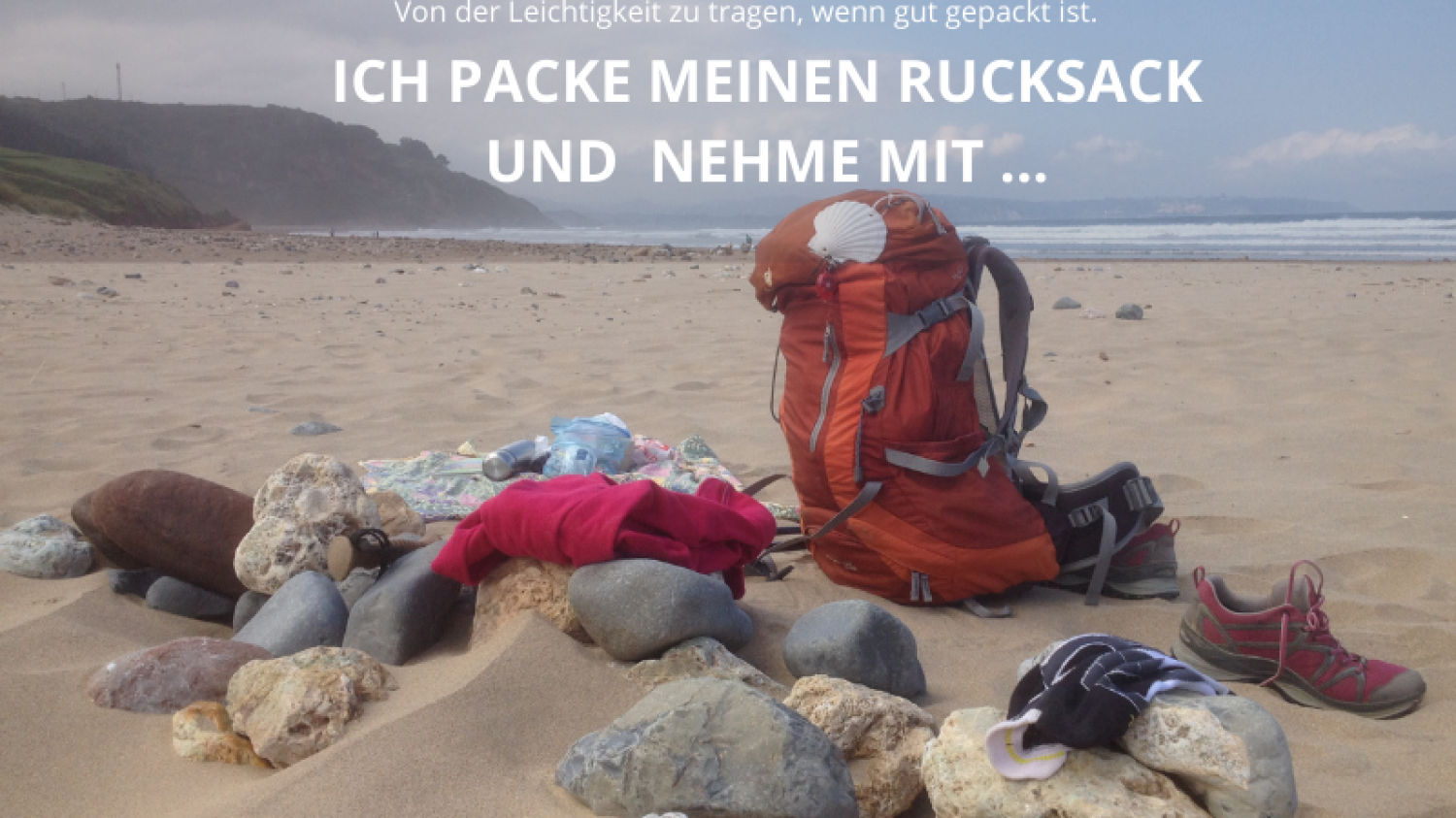
Create your own journey; Experience the best of Northern Spain at your own pace
This website uses its own and third-party cookies, for the proper functioning of the site and to generate usage statistics.
By continuing to browse we understand that you consent to our �ookie policy

A well-packed backpack sits comfortably on the back and makes hiking with a heavy pack easier. So how can we organize the weight distribution in a way that increases comfort and keeps a good overview of the contents?
It matters a lot how the backpack is packed when we are hiking or backpacking. Packed well, your backpack feels much more comfortable on the back. At the same time, a properly packed backpack can take more and it is easier to keep track of things.
Even if personal preferences may vary, there are generally a few basic rules when packing. It's all about distributing the weight optimally. But it's also about strategically storing content in a way that makes everything easy to find. So if you haven't found your own way of packing your backpack yet, it can be an advantage to first put the entire contents next to the backpack. It gives a good overview of what, for example, might be needed first and what one would like to have access to during the day. Of course, the comfort also depends on whether the right hiking backpack has been chosen and whether it has been adjusted correctly.
So how do I pack my hiking backpack?
It makes sense to divide the backpack into different zones:
at the bottom and at the top, the light things, for example pajamas, light jackets or shoes, sleeping pad etc.,
towards the middle it should get heavier, for example a sleeping bag, warm clothes, etc.,
the heaviest items, such as cooking utensils and heavy groceries, cans etc. should be stored as close to the back as possible.
Small items that you need easy access to during the hike, such as rainwear, sun hats or gloves, etc., should be stowed in the backpack lid.
Tip for the sleeping bag: A little facility might be to use a waterproof stuff sack for the sleeping bag instead of having it in the original compression bag. This can make it easier to shape the sleeping bag in the pack and fill in small corners when not squashed. It is a matter of taste whether you prefer the compressed sleeping bag or not. In any case, it's a good idea to have the sleeping bag in a waterproof bag, especially when hiking in wet weather.
Pack the heavy stuff in the middle of the backpack
When packing the hiking backpack, the aim is to be able to carry the backpack as comfortably as possible. The best balance is created when the heavy things are packed in the middle of the backpack. For example, it can be tents, cooking utensils and food. Some people prefer to attach the tent to the outside of the bag. However, when packing it in the bag, it makes sense to pack it as far back as possible. This creates the best and most ergonomic wearing comfort.
Again, it can be an advantage to take the tent out of the original packaging when packing a tent. Tent poles and pegs are placed against the back while the inner tent and canopy can be wrapped between the heavy things.
Extra clothing and socks could also be used to fill gaps between the heavy items. In this way, the space in the backpack is used optimally. When packing larger items of clothing such as a light down jacket, heavy fleece jacket, or other middle and outer layers of clothing, it is best to have them furthest from the back. This creates space to pack the heavy things where they are closest to the spine.
So the insider tip is to pack the light and medium-heavy things at the top. The wind jacket, a light sweater or the inner tent could be stowed away in the upper part. In general, it's easiest if the things you need during the day are upstairs and easily accessible. Most backpacks are also equipped with a lid compartment. Things like a first aid kit, handkerchiefs, flashlight, pocket knife, map, compass and other small things that need to be easily accessible can be conveniently placed here. The side pockets and hip belt pockets can hold small snacks, lip balm, sunglasses or anything else you would like to have close at hand.
What do I really need now?
The basic essence of packing seems obvious, but it should be emphasized again here: Only take what is really needed.
It is clear that the heavier the hiking backpack, the less comfortable it is to carry on your back - no matter how well packed it is. When packing your hiking backpack, it is therefore worth checking what you actually need to take with you. It can be difficult to know
Back